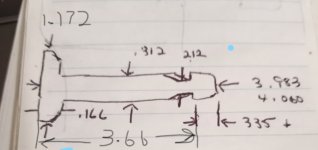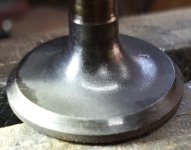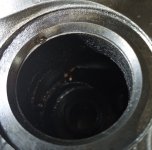sounds like the engine is already apart. Normally the head comes off, the valve spring gets compressed with your own tool or an inexpensive one you can buy, then the keeper comes off. The valve to tappet clearance gets measured, usually at a specific piston height past TDC then the tip end gets evenly ground on a fine cool grinder wheel until the clearance is in spec. If you gently rock the valve when it is about 1" high off the deck you can feel the guide play. These flat head engines are not worth the PITA to replace guides unless you already have the tool set to ream them out and press in new guides. It is not a car that you will drive 100.000 miles more. All you need is it to run well when blowing snow or whatever. If you want to rebuild it, do it because it is hobby, not to save money. You can buy a new engine for less than to properly re-manufacturer the old one. If you just do a new head gasket and valve adjustment your compression should be fine, unless the cylinder is scored.




